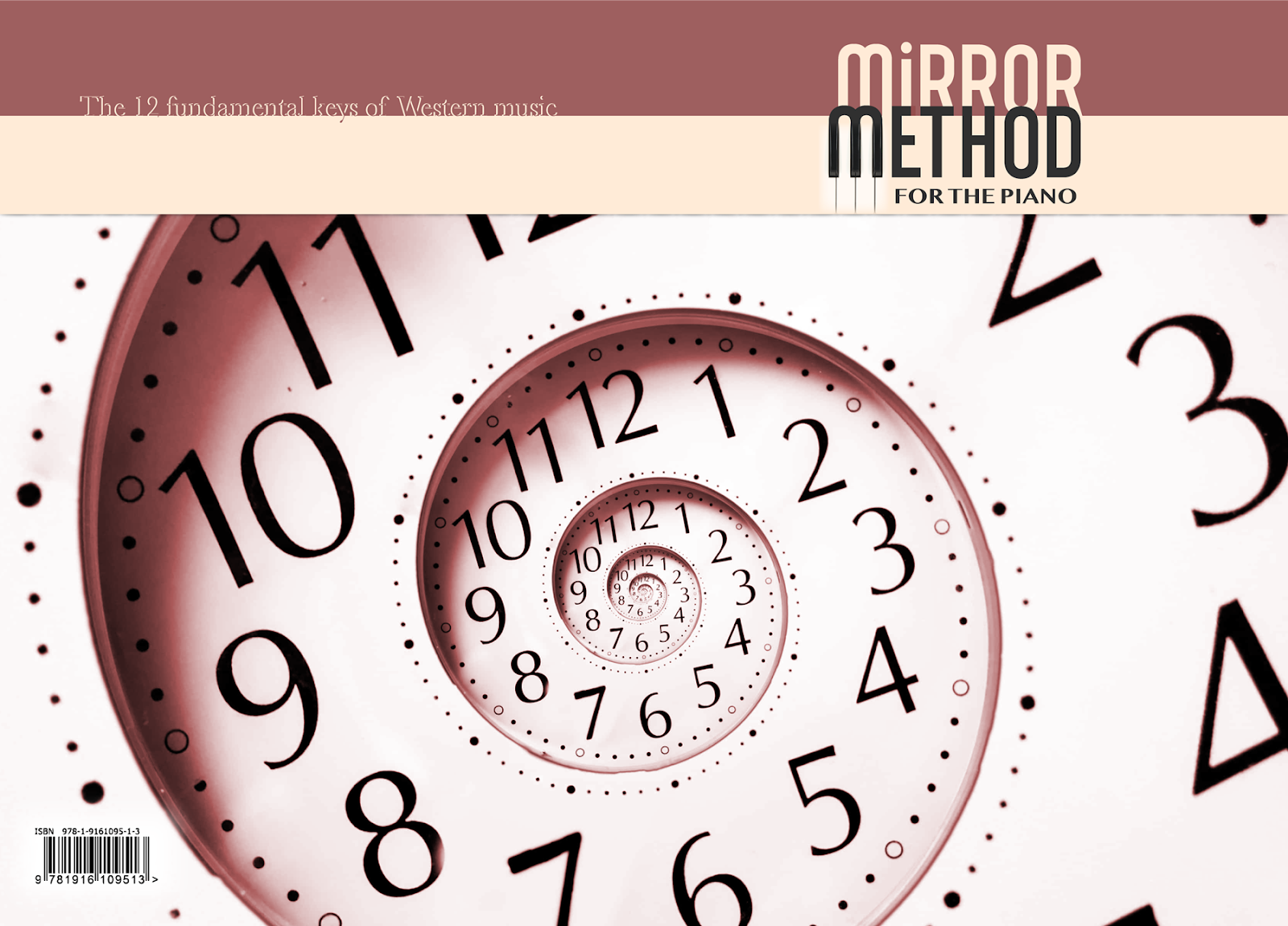The piano keyboard has been designed to fit our hands.
Its layout follows a fundamental element of nature:
symmetry.
The Mirror Method for the Piano is a technique that uses symmetry to help learners first understand the piano keyboard visually through playing along to a wide variety of recorded music.
This unique approach creates a hands-on learning experience, improves eye–hand coordination, and helps develop strong listening skills from the very beginning of one’s musical journey.
Get the book

A collection of 12 easy-to-follow illustrations to start you on a journey of musical discovery.
Read more
As a whole, the book is a compact resource designed to guide your learning journey and add some colour to the following:
⁍ The tuning system named 12-TET (12-tone equal temperament)
structures the tonal range into octaves, each subdivided into 12 equal logarithmic steps — creating 12 tones, each representing a distinct pitch class.
⁍ The 12 tones are labelled as follows: 7 natural (A, B, C, D, E, F, G) and 5 accidental (A♯/B♭, C♯/D♭, D♯/E♭, F♯/G♭, G♯/A♭).
⁍ Across the range, each of the 12 pitch classes gives rise to a tonal domain — within which scales of up to 12 tones can be built using any given pattern.
⁍ A given scale pattern can be transposed to all domains — creating 12 musical milieus specific to that pattern.
⁍ Furthermore, rotations of any particular scale pattern produce a number of scales — all related and belonging to the same milieu, each identified by a tonal centre.
⁍ Rotations of the scale pattern formed by the 7 natural tones (A–B–C–D–E–F–G) produce 7 fundamental scales: Aeolian, Locrian, Ionian, Dorian, Phrygian, Lydian, and Mixolydian — named after ancient Greek regions of Asia Minor.
⁍ To aid memorisation, these scale names are mapped to ROYGBIV — red for Aeolian, orange for Locrian, yellow for Ionian, green for Dorian, blue for Phrygian, indigo for Lydian, and violet for Mixolydian.
Place an order

